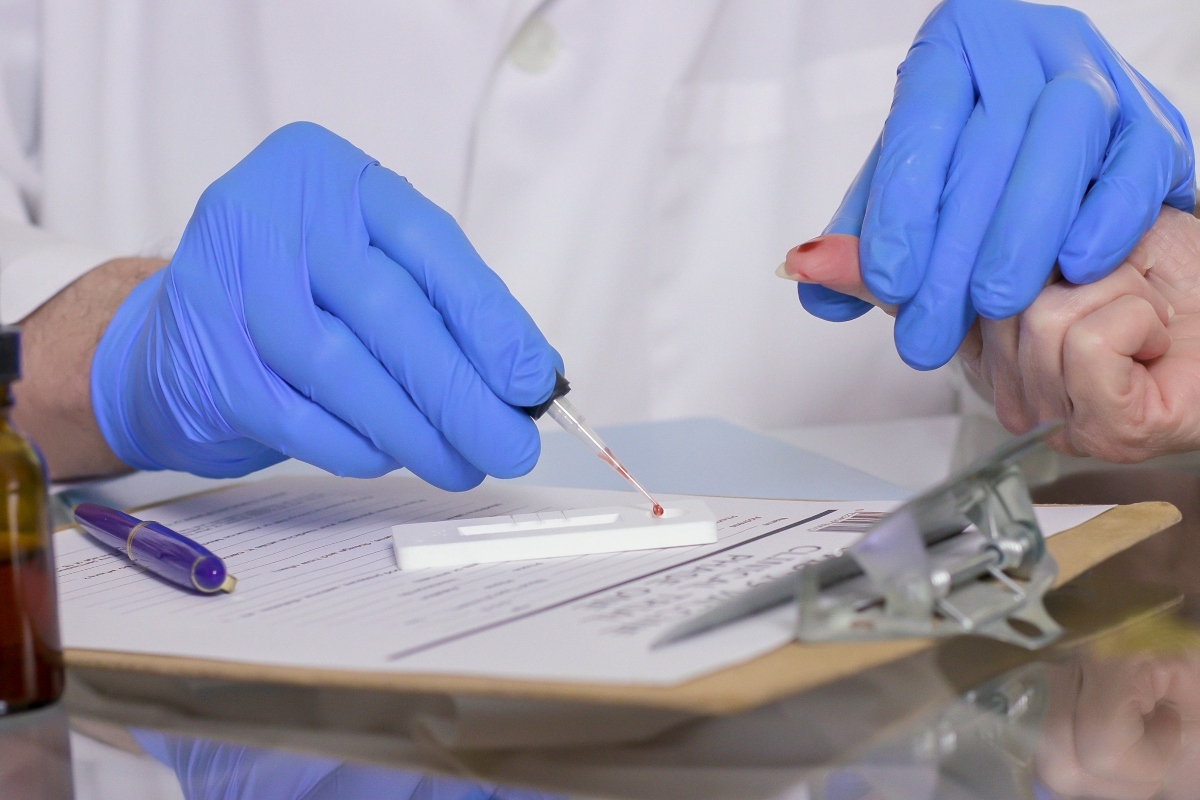 The role of electrode materials in accurate, sensitive point-of-care diagnostic readings"
class="w-full h-full object-cover"
/>
The role of electrode materials in accurate, sensitive point-of-care diagnostic readings"
class="w-full h-full object-cover"
/>
The role of electrode materials in accurate, sensitive point-of-care diagnostic readings
In electrochemical point-of-care (POC) diagnostics, the performance of the sensor is only as good as the material at its core. Electrode materials are active transducers that directly influence how accurately and reliably a device can measure clinically relevant biomarkers. The choice of electrode substrate plays a defining role in enabling real-time, on-site testing with laboratory-level performance from detecting glucose and lactate to interleukins and cortisol.
To advance the field beyond its current limitations, novel carbon nanomaterials are emerging as transformative alternatives to traditional materials like noble metals and screen-printed carbon. These materials have demonstrated significant gains in signal clarity, reproducibility and sensitivity across a wide range of electrochemical assays.
What makes an ideal electrode for point-of-care use?
For any biosensor, the electrode serves as the interface between biology and electronics. Its properties govern the fundamental interactions that drive signal generation. In point-of-care diagnostics where performance must be maintained across small sample volumes, three characteristics are especially critical.
High electrical conductivity
The more efficiently an electrode material transports electrons, the more precisely it can convert molecular interactions into readable signals. Low-resistance materials reduce background drift and allow for faster, more consistent measurements which are essential for time-sensitive diagnostics.
Large effective surface area
Higher surface area increases the density of active binding sites for biorecognition elements (e.g. antibodies, enzymes, aptamers). This amplifies the current response and improves the signal-to-noise ratio (SNR), enabling detection at ultra-low concentrations down to the femtogram or even attogram level.
Biocompatibility and surface chemistry
Electrodes must allow for stable and specific immobilisation of biomolecules without compromising their structure or function. On top of that they should resist non-specific adsorption of proteins or other interference, particularly in complex biological fluids like blood, saliva or serum.
Scalability and antifouling properties
For widespread use in point-of-care settings, electrode materials must be manufacturable at scale and maintain consistent performance. At the same time, they must resist fouling from biological fluids (such as blood, saliva, or urine) to ensure accurate readings without the need for complex pre-treatment or frequent recalibration.
What are the limitations of traditional electrode materials?
Despite widespread use, conventional electrode materials present persistent challenges in the context of modern point-of-care devices.
Noble metals (e.g., gold, platinum)
These are valued for their conductivity and surface stability, but they come with trade-offs. Gold and platinum are costly, making them impractical for high-volume, disposable applications. Additionally, their smooth, inert surfaces often require aggressive chemical functionalisation for biomolecule attachment, which can compromise reproducibility and stability.
Screen-printed carbon electrodes (SPCEs)
SPCEs are affordable and widely used, but they suffer from limited sensitivity due to their low surface area and batch variability. Their performance is heavily dependent on ink formulation and printing conditions, making consistent signal output difficult to guarantee across production lots.
CVD graphene and CNT-based platforms
Graphene and carbon nanotubes are extremely promising for POC thanks to their high conductivity and surface area. That said, they typically involve complex, high-temperature fabrication processes that are difficult to scale. Alongside this they also often showcase surface defects and transfer inconsistencies that limit their commercial viability and scalability in POC contexts.
New carbon nanomaterials designed for precision in POC settingsc
A novel carbon nanomaterial has been specifically engineered to overcome the limitations of conventional electrode technologies in biosensing. Unlike planar gold or screen-printed carbon, this innovative three-dimensional carbon material combines high electrical performance with advanced surface functionality and process scalability. These are essential traits for delivering sensitive and reproducible point-of-care diagnostics. It is a platform technology for next-generation electrochemical sensors across decentralised diagnostics thanks to a number of key features.
- Amplified sensitivity through high surface area: The material’s 3D foam-like morphology dramatically increases electroactive area, enabling denser loading of biorecognition elements and stronger signal responses even for biomarkers present at extremely low concentrations.
- Superior signal-to-noise ratios for clear, reliable detection: Its uniform, conductive network reduces electrical noise and baseline drift, making it easier to distinguish true biological signals from background interference.
- Ultra-low detection limits across diverse analytes: Sensors built with this nanomaterial routinely achieve femtomolar or sub-femtomolar detection thresholds for targets such as interleukins, cortisol, glucose, and lactate, rivaling the sensitivity of laboratory-based techniques like ELISA testing.
- Intrinsic antifouling properties: The surface naturally resists protein and lipid adhesion, maintaining accuracy in complex biological fluids such as saliva, blood, and serum while reducing the need for surface regeneration or blocking steps.
- Reproducible, scalable manufacturing: Produced via a low-energy, catalyst-free method, the material ensures batch-to-batch consistency and is easily integrated into commercial-scale production workflows for both disposable and reusable sensor formats.
Paving the way for the next era of POC diagnostics
Accurate, sensitive point-of-care diagnostics depend on the electrode material at the heart of the sensor. Ideal electrodes must offer high conductivity, scalable manufacturing and other features, but most traditional materials often fall short of these requirements, especially in demanding real-world conditions.
An innovative carbon nanomaterial has emerged to meet this challenge, and that material is Gii. Engineered for scalability and sensitivity, Gii is enabling a new generation of electrochemical biosensors that deliver laboratory-grade performance wherever testing is needed. Its intrinsically antifouling surface and reproducible, low-energy manufacturing process make it uniquely suited for commercial deployment in real-world diagnostic environments.
To find out more about Gii and its value in applications like POC diagnostics, download our guide below.

.jpg)

